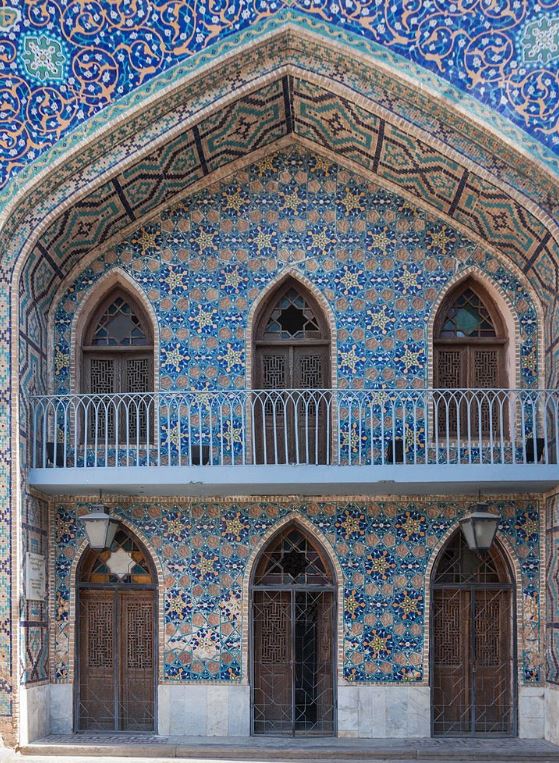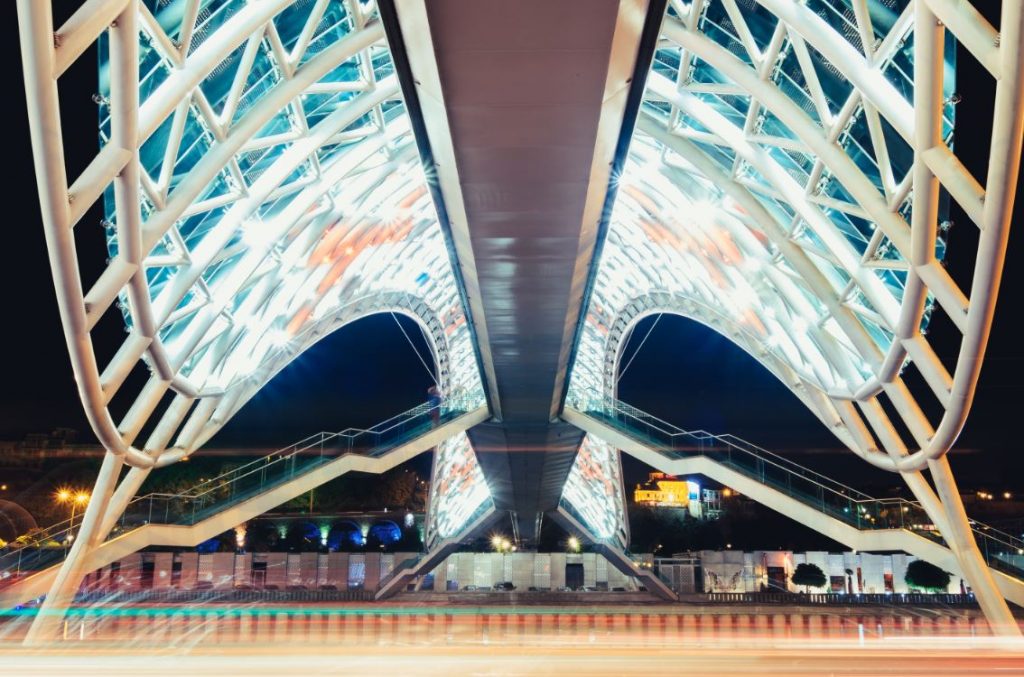The Georgian capital of Tbilisi sprawls along the banks of the Kura (called Mtkvari in Georgia) as it winds its way eastward to the Caspian Sea. Travelling through the city it is easy to see the influences of the different regimes that have ruled here over the centuries. The fascinating range of architecture clearly reflects the varying fortunes of the population through each era, including classical, rococo, baroque, neo-gothic, and Islamic.
Islamic architecture facts
This eclectic mix of heritage styles adds to the attraction of this beautiful capital, of which the native Georgians are proud – and rightly so. It is a place that has been, because of its unique placement, fought over since its very foundation. Check out our article on Islamic Furniture.
King Vakhtang I of Iberia
One of the myths of this foundation (which is accepted by most Georgians) recounts the story of King Vakhtang I of Iberia, who was hunting in the region (which was said to be heavily wooded) with a bird of prey, sometime between 447 and 522 AD. His falcon was said to have caught its prey – a pheasant – but both birds tumbled into one of the hot springs that were around the area, and died.
Tbilisi hot springs
The king was so impressed with the hot springs that he had the entire forest levelled so that he could establish a city around them.
Whether or not this account is true, it has certainly added to the rich history of the city. The baths account for its name; Tbilisi means ‘A warm place’.
And the Islamic architecture centred around the baths lends a beautifully exotic element.
A nation under conflict
Georgia has both gained and suffered from its position, connecting the eastern and western worlds. Its strategic importance for trade has made it a coveted target for foreign powers, including the years between 736 AD and 1122 AD, when it was under Islamic rule as the Emirate of Tbilisi.
Successive invasions and attacks (including the destruction of the city to quell a rebellion by a local emir) have all but erased the Islamic architecture from the landscape. But a few gems still exist to provide an idea of how it once might have looked –
The Orbeliani Baths
With its spectacular mosaic-tiled frontage, this stunning piece of Islamic architecture leaves you in no doubt as to its influences. It is tucked away in the Abanotubani district of Tbilisi ‘old town’, where some sixty or more separate bathhouses were once to be found. The healing qualities of the sulphurous water have been extolled for many centuries, and the majority of the locals swear by it. Bathing is seen as part of the social life of the community – even more so during the winter months.

Orbeliani Bath House
It is also promoted as one of the ‘things to do’ when visiting Tbilisi. The building has been renovated within the last few years, with the interior finished to an understated opulence that is reflected in the cost of a visit – this is the most expensive in the city, and the most ‘touristy’.
Pushkin Baths
Also known variously as the Royal Baths, the Blue Baths, and even the Pushkin Baths (the poet Alexander Pushkin once visited, as evidenced by a plaque outside), this unique building positively shines with Islamic influence. while managing to blend with the traditional Georgian architecture that surrounds it.
Bathhouse No.5
Regarded as the oldest and most authentic ‘sulphur baths’, their appeal from the outside lies in the intriguing domes of reddish-brown bricks and tiles that hide the subterranean baths. Once below ground, however, you are rewarded with the sight of colourful mosaics, in stark contrast to the plain exterior. The designs aren’t, strictly speaking, ones traditionally found in Islamic architecture, as they are more recent additions. But they echo their styles and colours.
Bathhouse no 5 Tbilisi
Blue is often used in Islamic art, obviously as a reference to water and its purported healing qualities here at the bathhouse. It is also regarded as a ‘holy’ colour, representing purity. The Muslims who built and used the sulphur baths centuries ago would have viewed bathing here as a spiritual as well as a physical process.
ccc
In spite of its past, Georgia is seen as a Christian country, with only 10% of the population listed as practising Muslims. Although a search on Google will return more results, the Jumah mosque is the only one ‘officially’ listed as the only one. A second mosque (the Blue Mosque) was demolished in 1951 during Soviet occupation to allow for a bridge to be built. Having nowhere to worship, the Shia Muslims of the Blue Mosque were accepted into the Sunni Muslim Jumah Mosque.

Tbilisi Central Mosque
The two denominations still worship side by side today. The Jumah Mosque, with its single red brick minaret, originally dates to the 1700s, though it too has seen its fair share of troubles. Since it was built it has been extensively damaged and rebuilt on at least three occasions. It is set upon a hill, adjacent to the sulphur bath district of Abanotunani (literally meaning ‘Bath District’) and if it wasn’t for the distinctive tower it would be easy to miss.
Cool things to do in Tbilisi
In fact, many a tourist has snapped away with their camera at the Orbeliani Baths assuming that they were photographing the mosque! This is a shame, as the interior gives a wonderful sense of light airiness, helped by the huge arched windows. The light flows through the typically open-plan feel of the space, with little in the way of furnishing. The walls and ceiling more than make up for this, overflowing with foliate designs, complex but beautifully geometrical patterns, and striking Arabic calligraphy.
Islamic architecture in Tbilisi might not be as prevalent as it once was, but what remains certainly adds to the richness of the culture. But look a bit deeper and you’ll see subtle influences elsewhere, in the baroque and rococo designs that display a definite Persian flair. And this is as it should be; a perfect blend of East and West that is both a delight and an inspiration.









